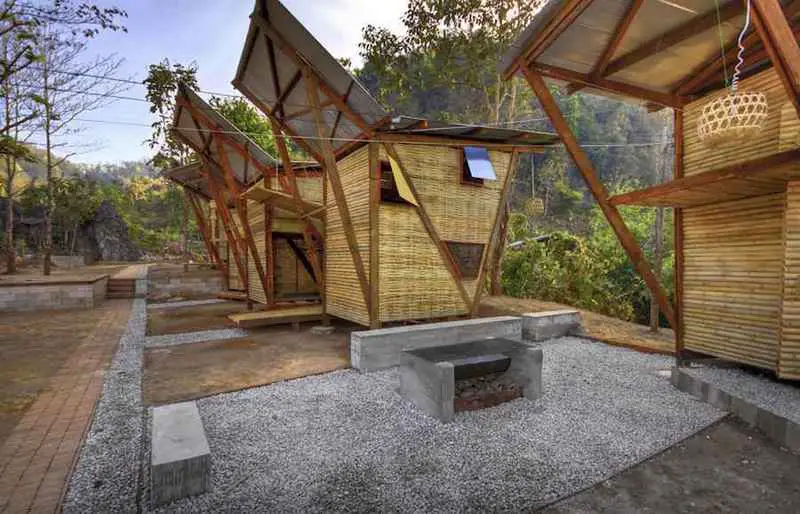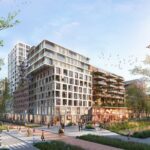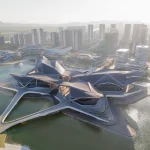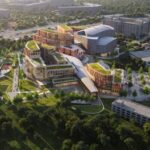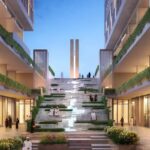TYIN tegnestue Norway, Norwegian Design Studio, Architects Office, Architecture Practice
TYIN tegnestue Arkitekter : Studio Information
Norwegian Architects Practice – Trondheim Design Office News
1 Oct 2012
TYIN tegnestue Arkitekter – The European Prize for Architecture
The European Prize for Architecture Winners in 2012
The Chicago Athenaeum and The European Centre for Architecture Art Design and Urban Studies announce that two young Norwegian architects, Andreas G. Gjertsen and Yashar Hanstad, principals of the architecture cooperative, TYIN tegnestue Architects in Trondheim, Norway, have been named as this year’s winners of The European Prize for Architecture for their humanitarian work designing and building with community participation in poor and underdeveloped areas in Africa and Asia.
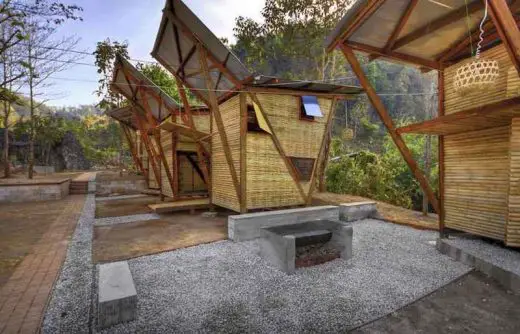
photo : Pasi Aalto / pasiaalto.com
European Prize for Architecture winners 2012
“This young Norwegian firm,” states Christian K. Narkiewicz-Laine, Museum President of The Chicago Athenaeum, “clearly understands the basic needs of the people for whom architecture must serve. ‘Serve’ is the key word here. This is not a glamorous architecture, but nonetheless, the most profound and noble in its attributes.
Our institutions are not so interested in the newest skyscrapers gracing the shores of Dubai or the Champs-Élysées in Paris.” “The European Prize,” he continues,” reaffirms our own institution’s commit-ment to finding and sup-porting a more humanistic approach to the practice of architectural design today.”
More information about TYIN tegnestue Arkitekter online soon
TYIN tegnestue Architects : main page on this Norwegian architecture studio
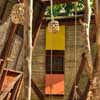
photo : Pasi Aalto / pasiaalto.com
Location: Fosenkaia 4b – Kartutsnitt, 7010 Trondheim, Norge
Trondheim Architect Practice Information
TYIN tegnestue Arkitekter are based in Trondheim, Norway
TYIN tegnestue Architects: The Architecture of Necessity
“The example of these young Norwegian architects is paramount in the coming decades for the Third World’s success at sustainability, urbanization, and social development, which contributes substantially to our world’s greater peace and harmony.”
“As with any great architecture, TYIN Architects’ works are able to transcend our social debate by producing an architecture that is timeless, deeply rooted in its context, and yet universal,” Mr. Narkiewicz-Laine continues.
TYIN tegnestue Architects was established in 2008 as a not-for-profit humanitarian design organization and is connected to the Norwegian University of Science and Technology where the two architects graduated and still teach.
TYIN’s main mission is to improve the human spirit; increase an awareness of environmental and/or address climate change; respond to our world’s growing need for clean water, power, shelter, healthcare, and education; and address the human crisis.
TYIN’s key aspect of an ‘architecture of necessity’ is about decisions that have real consequences for real people now, but also in the future and the involvement with the local people in a project ensures that there is a connection with culture, philosophy and vision of the people. “The perfectly integrated Design Ethos behind this practice,” states Ioannis Karalias, Museum Vice President, The Chicago Athenaeum, “is absolutely phenomenal, by involving the local designs, craft and build techniques, the final product not only is contextually accurate but aesthetically superb.”
Over the last few years, the office has completed several recent projects in the poor and underdeveloped nations of Thailand, Burma, Haiti, Uganda, and Sumatra, as well as designing and building in the vernacular tradition of their native Norway.
Safe Haven Bathhouse, Thailand
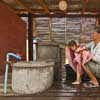
photo : Pasi Aalto / pasiaalto.com
Those projects include: Cassia Co-op Training Centre (2011) in Padang, Sumatra; Klong Toey Community Lantern (2011) in Bangkok, Thailand; Old Market Library (2009) Bangkok, Thailand; Safe Haven Bathhouse Library (2009), Tak Province, Thailand/ Burma; and Soe Ker Tie House (2008) Noh Bo, Thailand/Burma. They are most known for the design of dormitories for Karen refugee children in the Village of Noh Bo on the Thai-Burmese border. The six woven bamboo huts, dubbed Soe Ker Tie, or The Butterfly Huts because of their “winged” appearance were designed with the children’s happiness and health in mind. As simple as these new dorms may seem, they provide something wonderful for a growing child — a space to call their own to learn, sleep and play in.
By involving the local populace actively in both the design and building of their projects, TYIN tegnestue Arkitekter are able to establish a framework for mutual exchange of knowledge and skills. All materials used in TYIN tegnestue Arkitekter’s projects are collected close to the sites or purchased from local merchants.
The young Norwegian collective explains to us how to design in the poor areas of the world, involving the inhabitants and the communities, should be undertaken through their approach.
“We understand the very basic things: places to sit, places to meet,” states the firm. “What we do is to teach methods of working, we are teaching the solutions. We teach the way to approach the problem. We do not want to give people the ‘fish’ but to teach how to fish so they can catch their own. We start with the site and maybe with someone working on the site. We start the process with a real problem, not some made-up concept of a problem. And then they should solve it. It is not conceptual; it’s pragmatic. And then they will try to be conceptual on top of the pragmatic side.”
“It is actually quite difficult to understand the situation because the site is very complex: it is public, it is private, there are people moving, some of them don’t like it; some people are involved in the construction process, but they don’t really care. And information is usually very fragmented and hard to understand. The interesting thing for us is that we are not trying to actually answer everything, but trying to start a dialogue; trying to start people to become involved and interested. And we think that is actually more important than solving any one specific issue.
Soe Ker Tie House, Thailand
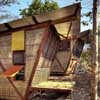
photo : Pasi Aalto / pasiaalto.com
In their project for the Soe Ker Tie House, TYIN tegnestue Arkitekter travelled to a small village on the Thai-Burmese border in Thailand in 2008. The orphanage housed around 24 children but needed to expand to accommodate around 50 children. The intention was to facilitate each and every child with their own private space.
The Soe Ker Tie House comprises six sleeping units, and the Soe Ker Tie House was dubbed by the workers as “The Butterfly Houses.”
The houses are unique and the designs have never been seen before by the local inhabitants. The specially shaped roofs facilitate natural ventilation and rainwater collection. The Butterfly Houses are assembled using a mixture of natural and man-made materials. This consists of bamboo, concrete, ‘iron’ wood and old tires. All the money spent on the project was used within surrounding villages in Noh Bo, strengthening the local economy. The combination of traditional and new materials facilitated the mutual exchange of knowledge between TYIN and the Karen workers.
During the construction of the Soe Ker Tie Houses, a number of the new principles were introduced by TYIN like the bracing of timber structures, and the casting of concrete in reused car tires. All these reduced the need for large amounts of expensive materials and time-consuming maintenance. This could not have been achieved by the Karen workers alone, because of the lack of educational and vocational training facilities. For this reason these techniques were designed to be copied and adapted by the Karen workers for any future development. The total cost of the build was $3,800.
For the children of Noh Bo, the Butterfly Houses are now their homes, which would otherwise consist of poor and cramped rooms.
In another project by TYIN tegnestue Arkitekter, the Safe Haven Library (2009), an additional facility at the orphanage, resulted from a a two week long workshop with 15 students from the Norwegian University of Science and Technology under the watchful eye of TYIN and the NTNU professors. This was led by the Finnish Architect, Sami Rintala.
Starting from the ground up, large rocks and stones were collected from the neighboring area, to form a basic foundation base for the concrete to be cast. The solid walls are made up of concrete blocks, which provide the mass to keep the building cool during the day. While the bamboo facades provide natural source of ventilation, the ironwood makes up the internal load bearing framework.
A few themes stand out: simple, modern construction with local materials, the creation of small, private nooks for personal space, and lots of little children. The total cost: $4,900.
Klong Toey Community Lantern, Thailand
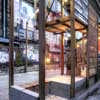
photo : Pasi Aalto / pasiaalto.com
In Klong Toey Community Lantern (2011), the project is located in the largest and oldest areas of informal dwellings in Bangkok. More than 140,000 people are estimated to live there, and most are living in sub-standard houses with few or no tenure rights or support from the government.
The area has great social challenges mostly due to the lack of public services like healthcare, affordable education, sanitation and electricity. An extensive drug problem greatly affects the social climate followed by high unemployment rates, violence and crime. In addition to the main function as a football court and a public playground the project works as a tool for the community to tackle some of the social issues in the area. This project is part of a development on a larger scale, and it had to be considered as a small contribution that might lead to positive change. With the local connection established both in the local community and a professional network in Thailand, the project has greater chances of having a social sustainability.
Space was limited on the site, and it was important to maintain the size of the football field. As a result of these limitations the footprint of the structure measures 12m x 1,2m and the full height of the building is short of 5 meters. Due to poor ground conditions a concrete base was cast to support the weight of the building. Total cost: €4,500.
“Interest among architects for socially conscious work has surged in the past decade due mostly to young, altruistic firms like TYIN Architects,” states Kieran Conlon, Director/COO, The European Centre. “The architectural profession is changing. Students and practitioners alike have worked to shift architectural production from the myopic confines that have entrenched the field for the better part of its history, i.e. mainly, in the designing of expensive buildings for exorbitantly wealthy and powerful clients. The rise of an architecture practice like TYIN Architects that commits itself to the critical issues faced by communities has been much more visible in the wake of macro-level events like Hurricane Katrina.”
“Our European institution,” continues Mr. Conlon, “and other leading organisations and design schools have established programs or studios with the express purpose of teaching and applying public service-based design such as what is advocated by TYIN Architects. It is our opportunity to shape a better world and to promote design and architecture for the public good.”
“Socially responsible design has a positive effect on all commercial activity social productivity, public service delivery, and how people feel about their quality of life. It improves the environmental performance of buildings and places and promotes sustainable ways of living,” concludes Mr. Conlon.
Andreas G. Gjertsen currently holds a position as Assistant Professor at The Norwegian University of Science and Technology (NTNU) and received his Master of Architecture there, 2004 – 2010. Yashar Hanstad is also based in Trondheim.
TYIN Architects have lectured and conducted workshops in England, Spain, France, Denmark, and Italy. They have been published in a variety of architectural publications globally. In 2011, the firm was awarded The International Architecture Award from The Chicago Athenaeum for the Soe Ker Tie House in Thailand and the project was exhibited by the Museum and The European Centre at the XIII BA11-International Biennial de Arquitectura in Buenos Aires last October.
A formal presentation by TYIN tegnestue Arkitekter will take place in New York and Istanbul in November, the exhibition will be organized by The European Center and will open at Contemporary Space Athens in Spring 2013. After Athens, the exhibition will travel through Europe and the United States.
Website: www.tyintegnestue.no
Norwegian Architecture
Norwegian Architect – Architect Studio Listings
Comments / photos for the TYIN tegnestue Arkitekter – Trondheim Architects Studio page welcome

